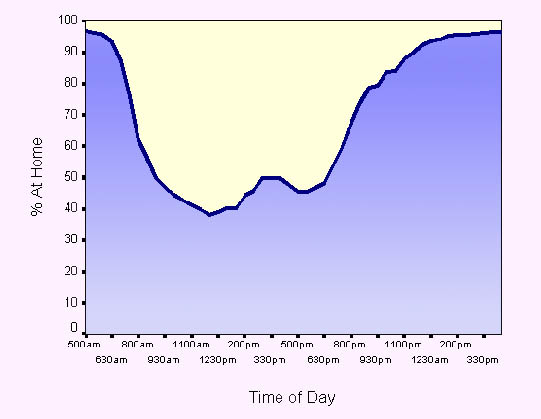
At Home in Latin America
It is said that a man's home is his castle. In an increasingly perplexing and violent world, the home is the last bastion against the assault from the outside world. But the home is more than a building structure, because the home is where the family resides. In the words of Eunice Durham, the family is the social group (which is perceived by its members as such a group), which is "organized to perform the tasks of (biological and social) reproduction, through the manipulation of the formal principles of alliance, descent and consanguinity on the one hand, and of the substantive practices of the sexual division of labor, on the other."
We will now cite some survey data from the TGI Chile survey. This is a survey of persons between the ages of 12 and 64 years old living in the Gran Santiago area. During the survey, the respondents kept a one-day diary in which they recorded their activities during a twenty-four hour period. Within this diary, the day is broken into 48 half hours; for each half hour, the respondents indicate their whereabouts (at home, at the office, at school, in public transport, etc), companions (alone, with family, with friends, etc), activities (sleeping, eating, working, etc) and media usage (watching television, listening to radio, reading newspapers, etc). Such time use data are very rich and interesting (see the references at the bottom of this page). For our purposes, we will focus only on where they were during weekdays (Monday-Friday).
On the average, the respondents spent 68% of their time at home, and the rest of the time out of home either at work, school, shops, cinemas or some other location. The graph below show the percent of time that they are at home as a function of the time of day. Obviously, most people are at home sleeping during the night.

At-home-ness differs by time of day and also by people. At one extreme, we have the image of the housewife, whose title suggests someone who is seemingly always around the house. At the other extreme, we have the image of the workaholic business owner/manager who is always at work. What is the reality? According to the TGI Chile study,
The following graph plots the at-home-ness of these three groups of people by the time of day. These data clearly reflect the division of labor according to gender roles. It would be interesting to see how these roles have evolved over time.

![]()
REFERENCES
(posted by Roland Soong, 2/23/2001)
(Return to Zona Latina's Home Page)